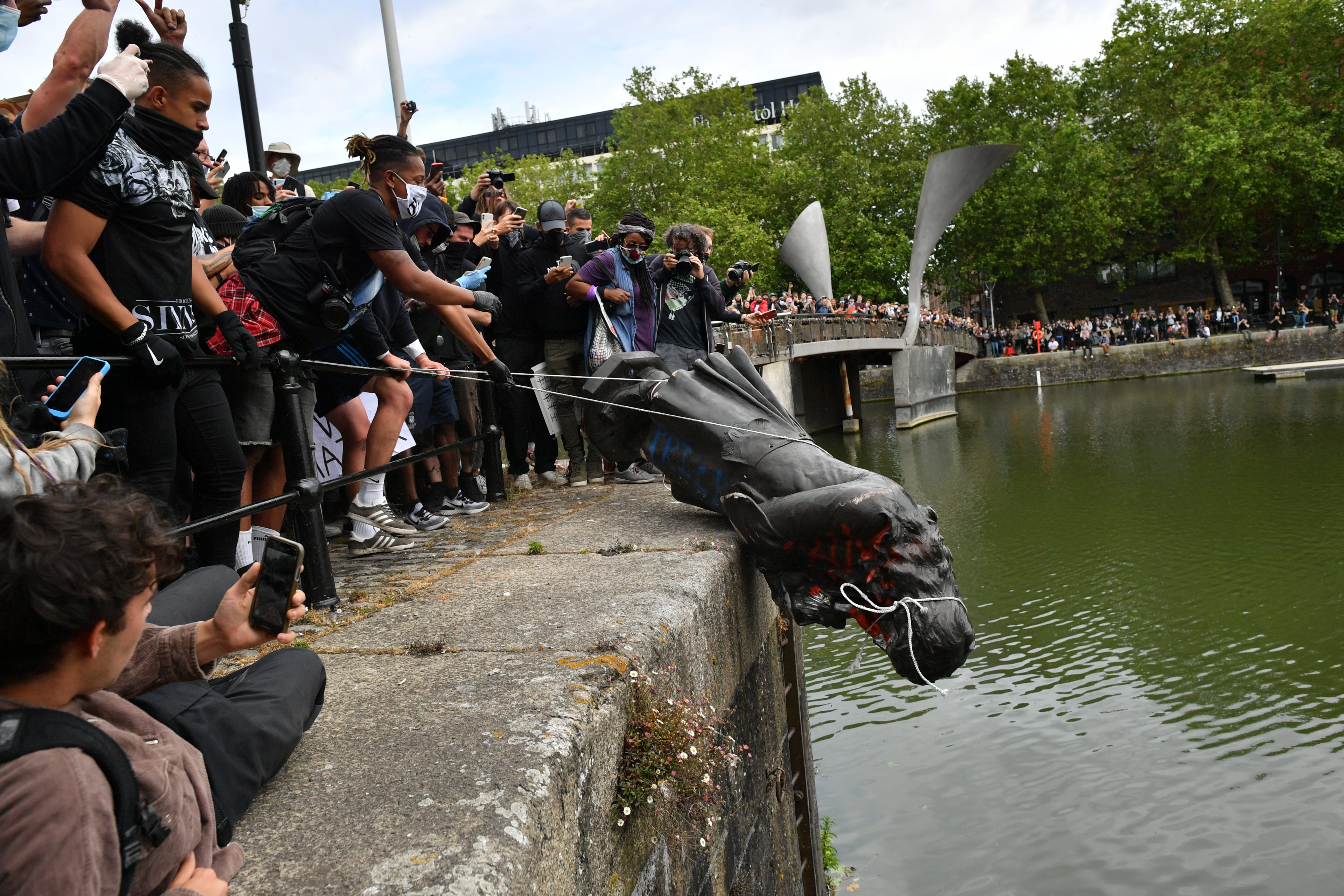David Olusoga defends those accused of tearing down Colston Statue
The historian and author gave expert evidence on the history of slavery, and its ongoing impact on people of Afro-Caribbean descent in Britain.

TV historian David Olusoga has explained Edward Colston’s role in shaping the slave trade to a jury trying four people accused of ripping down his statue during a Black Lives Matter protest.
Prof Olusoga provided expert evidence for the defence at the trial of Rhian Graham, 30, Milo Ponsford, 26, Sage Willoughby, 22, and Jake Skuse, 33, at Bristol Crown Court on Wednesday.
He described slavery as “a very emotionally charged issue” for people of Afro-Caribbean descent.
The toppling of the bronze memorial to the 17th century merchant on June 7 2020 became one of the key moments in the wave of protests in the aftermath of the murder of George Floyd in the US.
The prosecution argue it is “irrelevant” who Colston was or what he did, while the defence claim his history is vital to deciding the case.
Both Ponsford and Willoughby say they had a lawful excuse to pull down the statue, claiming it was protecting the citizens of Bristol from further harm caused by its presence.
Prof Olusoga, who teaches at the University of Manchester, explained how Colston had been born into a wealthy merchant’s family and risen to become “the elite of the elite” in the Royal African Company.
The company held a monopoly over the slave trade for a large part of the 17th century.
He compared Colston’s role of deputy governor to that of a modern-day chief executive, adding that around 84,000 Africans had been transported during his involvement with the company between 1680 and 1692.
An estimated 12,000 of this figure were children and around 19,000 of the enslaved are thought to have died en route to the Americas and the Caribbean.
Prof Olusoga said that at one point, Bristol was Britain’s largest slaving city, accounting for 20% of the trade, and was involved in the transportation of over half a million people – more than its current population.
The witness said that during his lifetime, Colston went through a process of “reputation laundering” and endowed huge sums of money to charitable causes in Bristol.
Following his death and continuing well into the Victorian period, a “Cult of Colston” sprouted in Bristol – with four societies dedicated to his memory.
The court heard previously that when a new plaque was proposed to explain Colston’s role in the slave trade, local business and philanthropic organisation the Society of merchant Venturers intervened to dilute the wording.
Prof Olusoga said that of the £70,000 legacy Colston left to Bristol, “much of that was to be administered through the Society of Merchant Venturers”.
He explained how young people had been snatched from villages in the African interior for transportation, while those deemed of little worth, such as babies and the elderly, would be massacred in front of them.
Slaves would be branded with a hot iron before being packed in tightly and chained to the decks of the ships bound for the Caribbean.
Owners had the right to torture and kill slaves who tried to rebel, and the bodies of those killed were often nailed to posts around plantations as a warning to others.
Slave-owning in British colonies was not abolished until 1834.
The British Government raised a huge sum, £20 million, through bonds to compensate slave owners for their loss – half of all the money it spent that year and around £16 or £17 billion in today’s money.
It held the record for the largest-ever government bailout of an industry until the bailout of the banks during the financial crisis of 2008 and 2009, Prof Olusoga said.
He said that through the payment of their taxes, every single person in the room would have “unwittingly financially contributed to the payment of that debt” as it was not paid off until 2015.
Prof Olusoga said the fact that members of the Windrush generation would have contributed to clearing this debt was still a matter of deep hurt to the community.
“They would have been paying taxes in this country, they would have been paying paying towards debt that was used to compensate the owners of their own ancestors,” he said.
“It is a very emotionally charged issue for people of Afro-Caribbean decent.”
Prof Olusoga was not challenged on his evidence by the prosecution.
In his evidence, Willoughby said: “Imagine having a Hitler statue in front of a holocaust survivor – I believe they are similar.”
He added: “Having a statue of someone of that calibre in the middle of the city I believe is an insult, and I will continue to believe that what ever the outcome of this (trial).”
The trial, which is due to conclude at the end of next week, continues.
